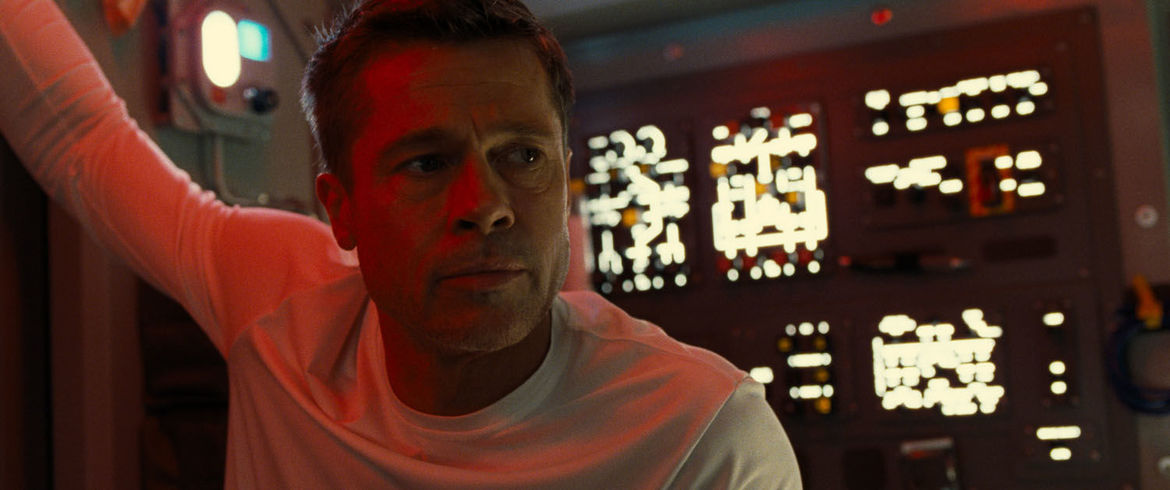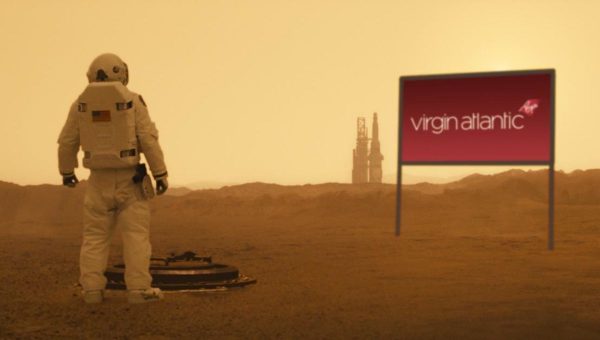Ad Astra predicts the future of commercial space flight, and it’s a $125 blanket – SYFY WIRE
Contributed by
Sep 24, 2019
Ad Astra presents a bold, visually stunning image of what space travel could look like in the not-too-distant future. A space antenna pierces through the upper limits of the atmosphere, lunar buggies make a mad dash over a desolate moonscape, and a massive rocket comes in for a rough landing on the dust-swept surface of Mars. And yet, the most jaw-dropping moment comes when Brad Pitt pays $125 for a blanket and pillow.
Pitt plays astronaut Roy McBride, who finds himself on a mission to the outer reaches of the solar system in an effort to stop a potentially world-ending event originating in Neptune’s orbit. He’ll eventually blast off from a top-secret Martian moon base, but he needs to get to the moon first, and his bosses have him fly commercial to avoid causing a public panic. So, McBride catches a ride on a Virgin Atlantic shuttle to the moon, as one does.
“The production team behind Ad Astra contacted us a couple of years ago and asked if they could use our branding in the movie,” a representative for Virgin Atlantic tells SYFY WIRE. “They were keen to work with us as they thought commercial airlines might, in the future, start flying to the moon. We thought it was a really fun concept and were really happy to get involved.”
In Ad Astra, commercial space flight is treated in a pretty mundane way — perhaps similar to the earlier days of air travel, when passengers dressed up for flights and flying was a luxury, but still a normal, fairly unexciting experience. When McBride gets to the moon, the base has all the charm of an airport layover, complete with familiar fast-food restaurants and a Hudson News (Hudson Group did not respond to SYFY WIRE’s request for comment about its lunar outpost).
There are some companies now, in the real world, that are making fledgling steps into commercial space travel of this sort, such as SpaceX and Blue Origin, and NASA is planning on eventually sending some astronauts into space via private spacecraft, similar to what happens in the movie.
In fact, Richard Branson’s Virgin group already has a company that’s engaging in a (much more limited) sort of commercial spaceflight. That company is Virgin Galactic, though the Ad Astra team was interested in using the traditionally terrestrial Virgin Atlantic’s branding as a means of showing just how much commercial travel had changed by the time of the movie, the Virgin rep explains.

Credit: 20th Century Fox
But, the casual future of commercial space travel seen in the movie is still a ways away — and a long time coming.
“I signed up with Pan Am to fly to the moon in 1969. You see where that got us,” John M. Logsdon, Professor Emeritus of Political Science and International Affairs at George Washington University, explains. Logsdon, who specializes in the history and policy of space travel, recalls that the now-defunct airline had a booth at the Kennedy Space Center where would-be moon men could reserve a seat on a trip that never came. It wouldn’t have been too dissimilar from a scene in the previous year’s 2001: A Space Odyssey, which featured a Pan Am space clipper making commercial jaunts to the stars.
Ad Astra is hardly the first movie to capture society’s dreams of catching a flight to the moon with as much ease as one travels to JFK or LAX. The film is set in the ambiguous near-future, but given that the main plot involves two generations of astronauts, it’s probably safe to assume it’s at least 50 years in the future, and probably more.
“All right, so here we are at 2019,” Logsdon says. “You have various companies with ambitions to provide commercial-like transportation to orbit and beyond, including the moon. None of them are anywhere close to doing that. We haven’t had a human to the moon for 47 years.”
That’s not to say Virgin Atlantic or some other company couldn’t make such travel a reality, but Logsdon says we should all temper our expectations.
“There are folks that think that within 50 years there will be settlements on the moon, and regular transportation between the Earth and the moon,” he says. “There’s no fundamental technical reason why that can’t happen, but it’s multiple steps away from where we are now.”
“We have no current plans to start flying to the moon but you never know what might happen in the future,” the Virgin rep adds. “The team at Virgin Atlantic are always innovating and launching new routes for our customers, so the moon could possibly be next.

Credit: 20th Century Fox
Okay, but when and if we do travel to the moon, will we really need to shell out $125 for a simple blanket and pillow?
“I can’t conceive of having basic economy on those flights where you have to pay for everything,” Logsdon says. He notes that Elon Musk’s SpaceX already has a customer signed up for a trip around the moon, and while the exact price that Japanese billionaire Yusaku Maezawa paid for his ticket hasn’t been made public, $100 million isn’t an outlandish estimate.
“You have to do a lot of cost reduction for Virgin Atlantic or Southwest or some equivalent services in 50 years,” Logsdon says, adding that the $125 pillow seems to indicate that Ad Astra‘s commercial space travel still isn’t all that cheap. “The fact that they charge that price suggests that it’s a very small portion of what they’re charging for fare, and that these flights are not going to be economy flights.”
According to Virgin, though, that pillow price tag might be the most implausible part of the whole sci-fi adventure.
“We’d never charge $125 for a blanket!” the rep says. “All food, drinks, and amenities on Virgin Atlantic are always free!”








